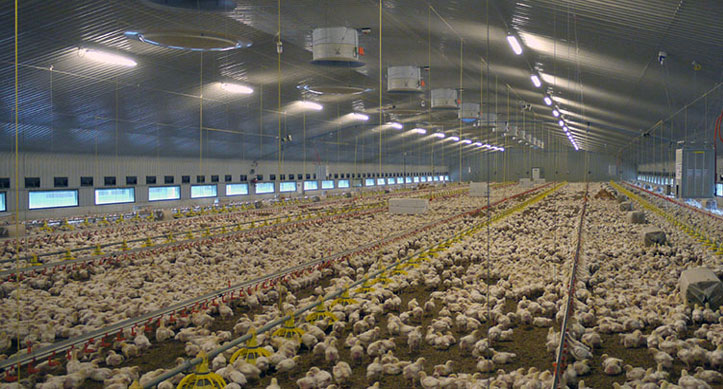
Starting a poultry farm in Lahore can be a rewarding venture, whether you’re raising chickens for meat, eggs, or both. But before you start feeding chicks or collecting eggs, you need one essential thing—a properly designed and well-built poultry farm.
This guide walks you through everything you need to know about poultry farm construction services in Lahore. From site selection and layout planning to ventilation systems and flooring, we’ll cover all the key areas using simple language and practical insights.
What Is a Poultry Farm?
A poultry farm is a place where birds like chickens, turkeys, ducks, or geese are raised for meat or egg production. In Lahore, broiler farms (for meat) and layer farms (for eggs) are the most common. Each type has specific needs when it comes to housing, space, temperature control, and waste handling.
Why Good Construction Matters in Poultry Farming
Building a poultry farm is not just about putting up a shed. The structure you build affects:
-
The health of your birds
-
Feed efficiency and weight gain
-
Egg production rates
-
Mortality and disease control
-
Energy use and long-term costs
A well-planned farm keeps birds comfortable, reduces labor, and improves overall performance.
Types of Poultry Housing
The kind of poultry house you build depends on the size of your operation, the climate, and your budget. The main types used in and around Lahore are:
1. Open-Sided Poultry House
-
Common in rural areas
-
Natural airflow for ventilation
-
Cheaper to build but harder to control temperature in extreme weather
2. Environmentally Controlled House (EC House)
-
Sealed structure with fans, cooling pads, and temperature sensors
-
Keeps climate stable in both summer and winter
-
Reduces disease and improves bird growth
3. Cage System vs. Deep Litter System
-
Cage systems are used for layer farms to improve egg collection and reduce floor waste
-
Deep litter systems allow birds to move freely on bedding like wood shavings or rice husk
Planning Your Poultry Farm in Lahore
1. Site Selection
Choose land that is:
-
Away from residential zones
-
Elevated for good drainage
-
Close to a clean water source
-
Accessible by road
-
Free from industrial pollution
Avoid building near other poultry farms to reduce the risk of disease transfer.
2. Farm Layout
A good layout separates areas for:
-
Bird housing
-
Feed and water storage
-
Egg or meat processing
-
Staff rooms
-
Waste disposal units
Keeping clean and dirty zones apart helps prevent the spread of disease.
Poultry Farm Construction Materials
Using the right materials keeps the structure durable and helps control temperature. Common materials include:
-
Bricks and concrete for foundations and side walls
-
Steel or wood for the frame
-
Galvanized sheets or aluminum roofing
-
Wire mesh or netting for ventilation sides
-
PVC or metal pipes for water and feed lines
Proper insulation is key, especially during Lahore’s hot summers and cool winters.
Key Features of a Poultry House
When designing and building a poultry house, focus on these features:
1. Ventilation
Birds need fresh air to stay healthy. Poor airflow can lead to heat stress or disease. Natural airflow or exhaust fans are used depending on the type of house.
2. Lighting
Layer farms need consistent lighting (16 hours per day) to maintain egg production. Broiler farms use light control for growth management.
3. Temperature Control
High temperatures can cause stress, while cold weather slows growth. Use fans, exhausts, foggers, or heaters as needed.
4. Flooring
Concrete floors are easy to clean and help control pests. In deep litter systems, the floor is covered with bedding to absorb moisture and waste.
5. Feed and Water Systems
Automatic feeders and nipple drinkers save time and reduce waste. Lines should be cleaned regularly to avoid contamination.
6. Drainage and Waste Disposal
Lahore’s monsoon season can cause flooding if drainage isn’t managed well. Plan for wastewater removal and proper disposal of manure.
Biosecurity in Poultry Farms
Biosecurity means protecting your farm from viruses and diseases. It’s just as important as the physical construction.
Important steps include:
-
Disinfecting shoes and hands before entering sheds
-
Limiting farm access to essential workers
-
Using foot dips and hand wash stations
-
Separating young chicks from older birds
-
Regular cleaning and spraying
A well-constructed farm makes biosecurity easier by providing separate zones and easy-to-clean surfaces.
Construction Timeline and Labor
Building a poultry farm in Lahore usually takes:
-
2–4 weeks for a small open-sided house
-
1–2 months for an EC House
Timeline depends on:
-
Weather conditions
-
Material availability
-
Size and number of sheds
-
Skilled labor availability
Always work with a team that understands local building norms and farming needs.
Poultry Farming Rules and Regulations in Lahore
Although poultry farms are mostly on private land, certain rules apply:
-
Keep distance from populated areas
-
Follow zoning laws (especially near city limits)
-
Prevent environmental pollution (like odor or waste runoff)
-
Ensure safe disposal of dead birds
-
Use proper labeling and cleanliness for egg/meat handling
Local municipal departments may inspect large farms or those near residential areas.
Common Mistakes to Avoid in Construction
Avoiding these mistakes can save you from costly problems later:
-
Building without proper airflow planning
-
Choosing a site prone to flooding
-
Using low-quality materials for roofing or wiring
-
Ignoring spacing guidelines (overcrowding leads to disease)
-
Not planning for future expansion
Think long-term and focus on both bird health and worker safety.
Cost Factors in Poultry Farm Construction
The total cost depends on:
-
Type of house (open-sided or EC)
-
Size (number of birds or sheds)
-
Material choice (steel vs. wood, metal vs. plastic)
-
Manual vs. automated systems
-
Site prep and soil leveling
Always budget for extra costs like backup power, water tanks, and fencing.
Final Thoughts
Constructing a poultry farm in Lahore takes careful planning, smart design, and the right materials. Whether you’re raising broilers for meat or layers for eggs, your farm’s construction directly affects bird health, production rates, and long-term success.
From choosing the right site to ensuring proper ventilation and flooring, every step matters. Keep bird welfare, cleanliness, and future needs in mind. A well-built poultry farm will run smoothly, keep your birds safe, and support efficient production all year round.



